Targeting SUMOylation promotes cBAF complex stabilization and disruption of the SS18::SSX transcriptome in synovial sarcoma
- PMID: 41193430
- PMCID: PMC12589557
- DOI: 10.1038/s41467-025-64665-8
Targeting SUMOylation promotes cBAF complex stabilization and disruption of the SS18::SSX transcriptome in synovial sarcoma
Abstract
Synovial Sarcoma (SS) is driven by the SS18::SSX fusion oncoprotein and is ultimately refractory to therapeutic approaches. SS18::SSX alters ATP-dependent chromatin remodeling BAF (mammalian SWI/SNF) complexes, leading to the degradation of canonical (cBAF) complexes and amplified expression of SS18::SSX-containing non-canonical BAF (ncBAF or GBAF) complexes that drive an SS-specific transcription program and tumorigenesis. We demonstrate that SS18::SSX activates the SUMOylation program. The small molecule SUMOylation inhibitor, TAK-981, de-SUMOylates the cBAF/PBAF component, SMARCE1, stabilizing and restoring cBAF on chromatin, shifting SS models away from SS18::SSX-driven transcription. The result is DNA damage, cell death and tumor inhibition across both human and mouse SS tumor models. TAK-981 synergizes with cytotoxic chemotherapy through increased DNA damage, leading to tumor regression. Targeting the SUMOylation pathway in SS restores cBAF complexes and blocks the SS18::SSX transcriptome, identifying an unappreciated role of SUMOylation in SS and a subsequent therapeutic vulnerability.
© 2025. The Author(s).
Conflict of interest statement
Competing interests: A.C.F. is a consultant and equity holder in Treeline Biosciences and has previously served as a scientific advisor for AbbVie and has received research funding from IDP Pharma. K.V. receives support from AstraZeneca. R.L. is an inventor of a provisional patent on targeted killing of EBV-positive cancer cells by CRISPR/dCas9-mediated EBV reactivation. S.A.B. is Consultant for Caris Lifescience, has received honoraria from SpringWorks for an educational lecture and is senior clinical program leader at Boehringer-Ingelheim. The authors declare that these listed activities have no relationship to the present study.
Figures
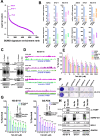
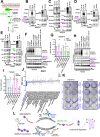


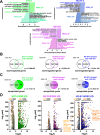
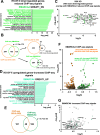
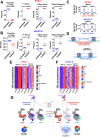
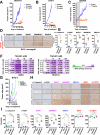
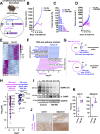

Update of
-
Targeting of SUMOylation leads to cBAF complex stabilization and disruption of the SS18::SSX transcriptome in Synovial Sarcoma.bioRxiv [Preprint]. 2024 Apr 27:2024.04.25.591023. doi: 10.1101/2024.04.25.591023. bioRxiv. 2024. Update in: Nat Commun. 2025 Nov 5;16(1):9761. doi: 10.1038/s41467-025-64665-8. PMID: 38712286 Free PMC article. Updated. Preprint.
-
Targeting of SUMOylation leads to cBAF complex stabilization and disruption of the SS18::SSX transcriptome in Synovial Sarcoma.Res Sq [Preprint]. 2024 Jun 6:rs.3.rs-4362092. doi: 10.21203/rs.3.rs-4362092/v1. Res Sq. 2024. Update in: Nat Commun. 2025 Nov 5;16(1):9761. doi: 10.1038/s41467-025-64665-8. PMID: 38883782 Free PMC article. Updated. Preprint.
References
-
- Clark, J. et al. Identification of novel genes, SYT and SSX, involved in the t(X;18)(p11.2;q11.2) translocation found in human synovial sarcoma. Nat. Genet7, 502–508 (1994). - PubMed
-
- Takenaka, S. et al. Downregulation of SS18-SSX1 expression in synovial sarcoma by small interfering RNA enhances the focal adhesion pathway and inhibits anchorage-independent growth in vitro and tumor growth in vivo. Int. J. Oncol.36, 823–831 (2010). - PubMed
MeSH terms
Substances
Grants and funding
- U54 CA231652/CA/NCI NIH HHS/United States
- R01 CA272710/CA/NCI NIH HHS/United States
- S10 OD030311/OD/NIH HHS/United States
- R50 CA265339/CA/NCI NIH HHS/United States
- 1R01CA272710-01A1/U.S. Department of Health & Human Services | NIH | NCI | Division of Cancer Epidemiology and Genetics, National Cancer Institute (National Cancer Institute Division of Cancer Epidemiology and Genetics)
LinkOut - more resources
Full Text Sources
Miscellaneous

